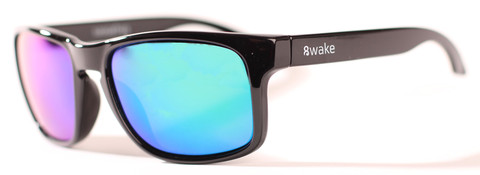Lens Technology for More Comfortable Winters
This guide already covered the immense importance of UV protection (look for sunglasses that block 100% UV) but there are plenty of other technologies to consider. Anti-fog, photochromic, anti-scratch, and anti-glare are a good place to start.
Anti-fog coatings are one of the best features for people who have experienced clouded sunglasses after starting up the car heater. Photochromic lenses darken and lighten in response to changing light levels. Anti-scratch helps to keep the lenses clear and anti-reflective technology prevents glare from reducing visibility.
Winter sunglasses are all about performance. Every feature has its place, and it’s important to put your unique needs first. If you need a good pair of driving sunglasses to cut snow glare, for example, you probably wouldn’t want to go with photochromic lenses because the windshield prevents those lenses from functioning. Choose carefully to make sure your sunglasses fit your specific needs for the winter season.
Tints and Treatments
The color of the lens can make a huge difference in visual accuracy and comfort. Colors like yellow, gold, amber, brown, and copper tend to enhance depth perception – these earthy colors are perfect for overcast winter days. Rose and red lenses are best for days when the lighting seems very flat, often the case in winter.
Brown lenses serve a dual purpose, along with green: these colors help to increase contrast. Enhanced depth perception and contrast are the reasons that these earthy/yellow-based tones are so popular in outdoor sporting and especially winter sports. Biking enthusiasts seem to opt for red lenses whereas golfers go with green, brown lenses are versatile and yellow are great for shooting sports. Knowing these trends can help you to pick a good lens tint for your everyday winter activities.
Do you need a high level of color accuracy? Invest in the classic: plain grey. Grey is great for everyday use because it helps to block light transmission but doesn’t change the overall color around you. This is ideal for anyone who drives a long commute each day or does outdoor work that relies on accurate color perception.
Mirrored shades fit into their own category. You can combine a mirror coating with just about any tint color, though the most common are grey and blue. Mirrored coatings reduce light transmission by a huge factor allowing for very effective protection against glare from snow or water.
Materials and Construction
Quality matters. Better workmanship and materials leads to better overall performance, comfort, and longevity. Look for sunglasses made with integrated filters instead of film treatments. Every layer of film reduces visual clarity whereas integrated filters offer superior visibility due to seamless design. Films also tend to scratch and wear much faster than solid construction frames.
Frame construction is just as important. You will want frames that are large enough to block the dry winter wind from irritating your eyes, with wide arms to prevent any sun glare in your peripherals. Look for high quality materials like metal or TR-90 plastic as lower-end materials are quicker to weaken with repeated exposure to temperature fluctuations.
You don’t have to pay a whole lot considering that winter sunglasses tend to take a beating anyways. The good news is that high end materials are easy to come by even in the lower end of the pricing spectrum. Check out these affordable designer frames – these sporty polarized cool blue mirrored lenses don’t cost a fortune but still provide the wide-lens and winter friendly features that make a pair of sunglasses truly high end.
This winter, treat your eyes with the care and comfort they deserve. They’ll be working double duty to spot ice slicks, snow banks, to see through glaring morning sun and bright snowy days. Even on overcast days, the ever-present threat of UV makes sunglasses a must-have winter accessory.

